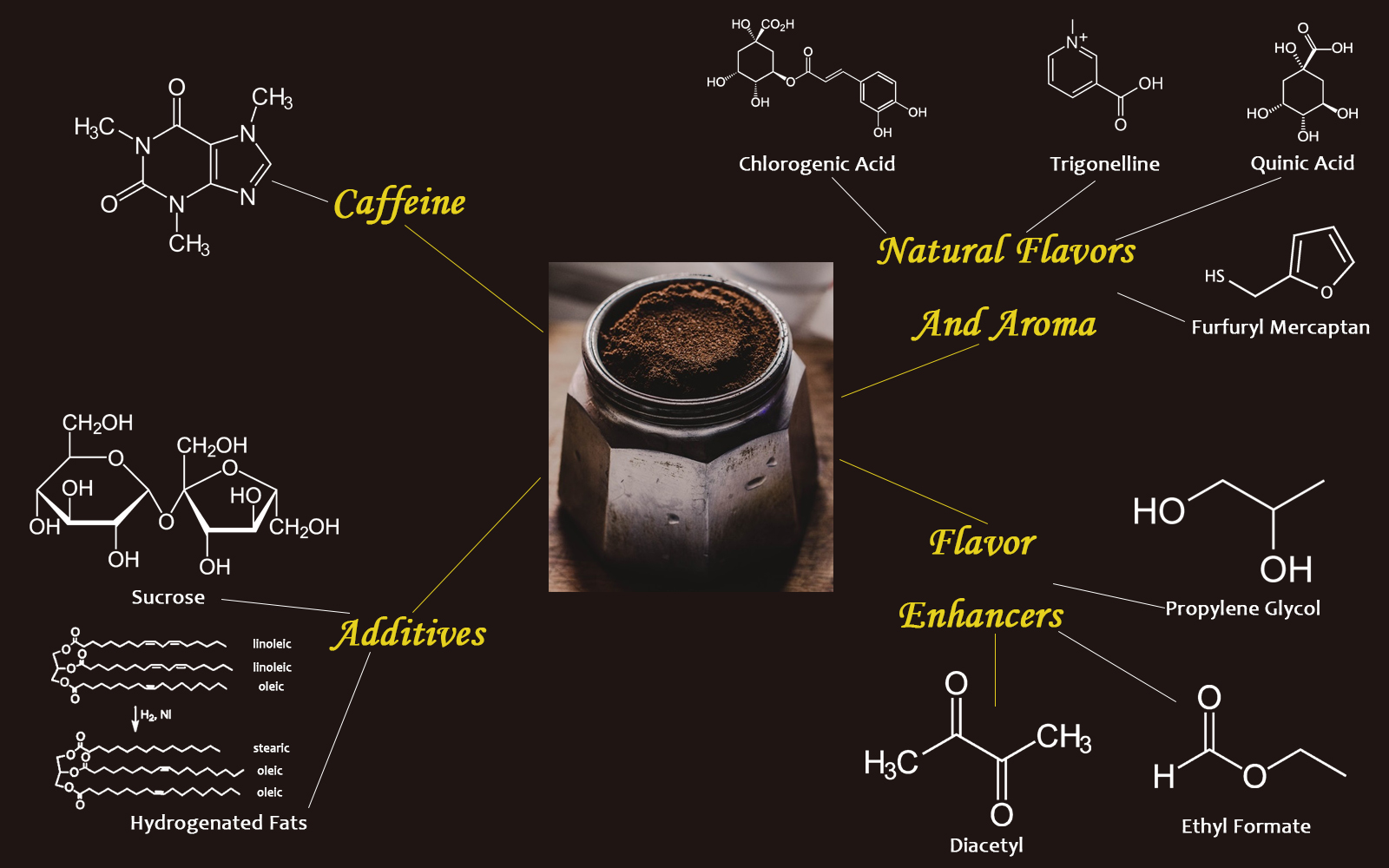
Navigation
Caffeine
Natural Flavors and Aroma
Flavor Enhancers
Preservatives
Instant coffee contains several major chemical structures that contribute to the taste, aroma, and physical makeup of the final dehydrated coffee product. Because coffee is primarily used as a stimulant beverage, caffeine is arguably one of the most important aspects of the architecture of the product. In general, each cup of standard coffee contains approximately 80 to 100 milligrams of caffeine. However, the additional steps associated with creating the final instant coffee product cause a loss of caffeine and flavor potency, resulting in an average of 65mg for a cup of instant coffee (this is further demonstrated in the algorithm section). In addition to the caffeine, coffee is recognized for its unmistakable smell and taste. Trigonelline, a bitter alkaloid, and furfuryl mercaptan contribute especially to the powerful aroma of coffee. Furfuryl mercaptan is an organic compound that is a clear, colorless liquid when pure, but becomes yellow upon prolonged standing. It possesses a strong odor of roasted coffee and a bitter taste. It is a key component of the aroma of roasted coffee. For the sometimes acidic and oftentimes bitter taste of coffee, one can thank the quinic acid and chlorogenic acid found in the coffee beans. Chlorogenic acids are the most abundant of many naturally occurring acids in roasted coffee beans. This acid demonstrates potent antioxidant effects which neutralize chemicals that can potentially damage your body tissue. Quinic acid along with citric and malic acids represent a significant portion of coffee’s total acid content. During roasting, quinic acid progressively increases as the levels of chlorogenic acid decreases. This acid has also been associated with an increase in perceived acidity as coffee infusions are left standing at elevated temperatures.
One way that instant coffee is distinct from whole coffee beans in that it has an extended shelf life. This is because the dehydration process used to create the final product strips the water content to a level of one to four percent, much too low for microbes to grow. The lack of moisture also gives the instant coffee its physical dirt-like look. Many varieties of instant coffee contain additives for sweetness or flavor. For example, some instant coffee may contain sucrose (sugar) as a sweetener or may already have hydrogenated fats to act as creamer. As was previously mentioned, the architecture section will demonstrate that the additional steps necessary to produce instant coffee renders the final product in need of several additional chemicals to enhance the flavor, aroma, and color of the instant coffee granules. Colorants, such as caramel and melanin color, are used in an effort to make the instant coffee resemble freshly roasted and ground coffee beans. Moreover, the dehydration process causes the coffee to need flavor enhancers such as ethyl formate, diacetyl, or propylene glycol. During the heat treatment processes, the natural flavor and aroma are captured but require the assistance of the aforementioned flavor enhancers when added back into the final product. Simply put, the natural flavor and aroma compounds are extracted and re-added throughout the instant coffee production process and, with additional chemicals, the final instant coffee product looks, smells, and tastes as close to a fresh cup as possible.